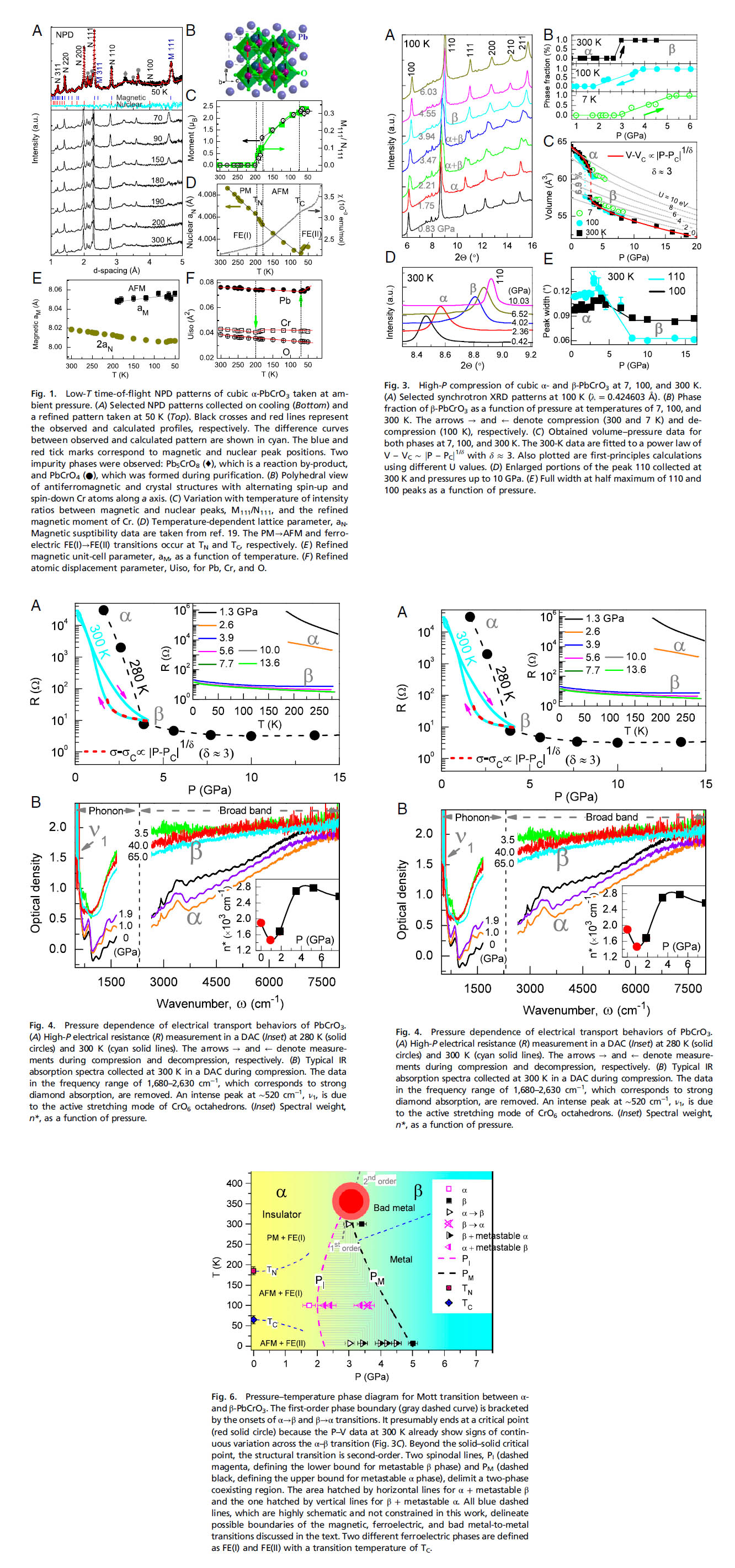多铁性PbCrO3材料中的非常规异莫特转变
( Unusual Mott transition in multiferroic PbCrO3 )
S. M. Wang, J. L. Zhu, Y. Zhang, X. H. Yu, J. Z. Zhang, W. D. Wang, L. G. Bai, J. Qian, L. Yin, N. S. Sullivan, C. Q. Jin, D. W. He, J. Xu and Y. S. Zhao
Proc Natl Acad Sci, 112, 15320 (2015)
The Mott insulator in correlated electron systems arises from classical Coulomb repulsion between carriers to provide a powerful force for electron localization. Turning such an insulator into a metal, the so-called Mott transition, is commonly achieved by “bandwidth” control or “band filling.” However, both mechanisms deviate from the original concept of Mott, which attributes such a transition to the screening of Coulomb potential and associated lattice contraction. Here, we report a pressure-induced isostructural Mott transition in cubic perovskite PbCrO3. At the transition pressure of ~3 GPa, PbCrO3 exhibits significant collapse in both lattice volume and Coulomb potential. Concurrent with the collapse, it transforms from a hybrid multiferroic insulator to a metal. For the first time to our knowledge, these findings validate the scenario conceived by Mott. Close to the Mott criticality at ~300 K, fluctuations of the lattice and charge give rise to elastic anomalies and Laudau critical behaviors resembling the classic liquid–gas transition. The anomalously large lattice volume and Coulomb potential in the low-pressure insulating phase are largely associated with the ferroelectric distortion, which is substantially suppressed at high pressures, leading to the first-order phase transition without symmetry breaking.

